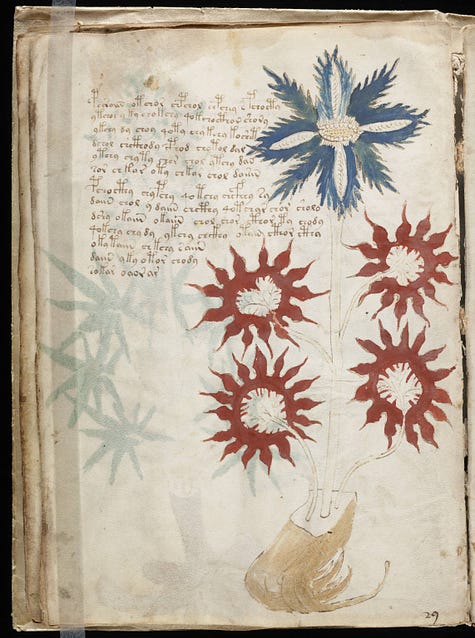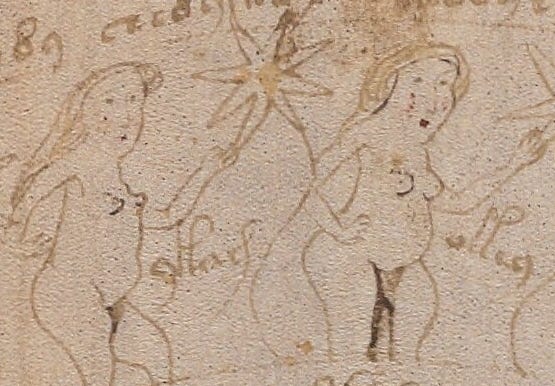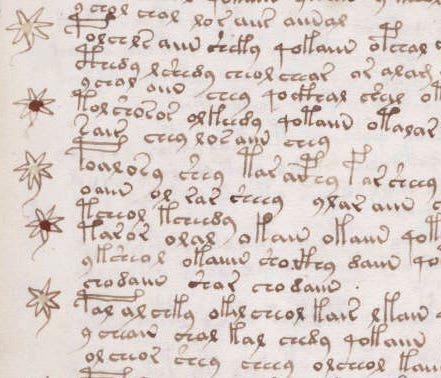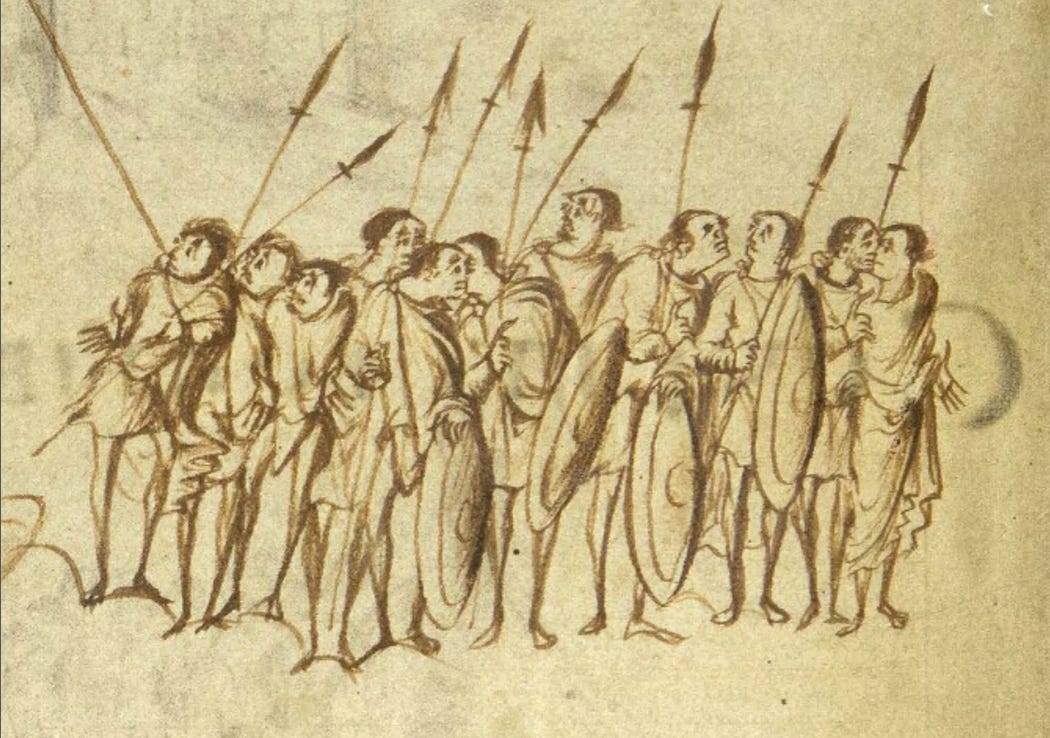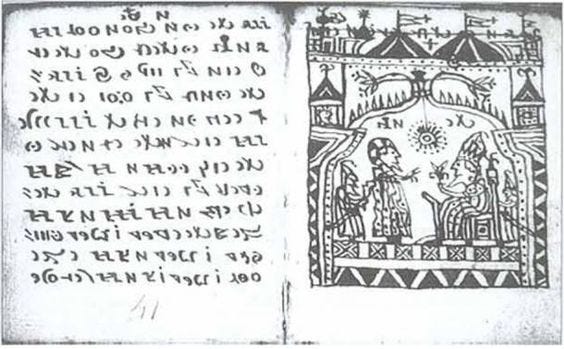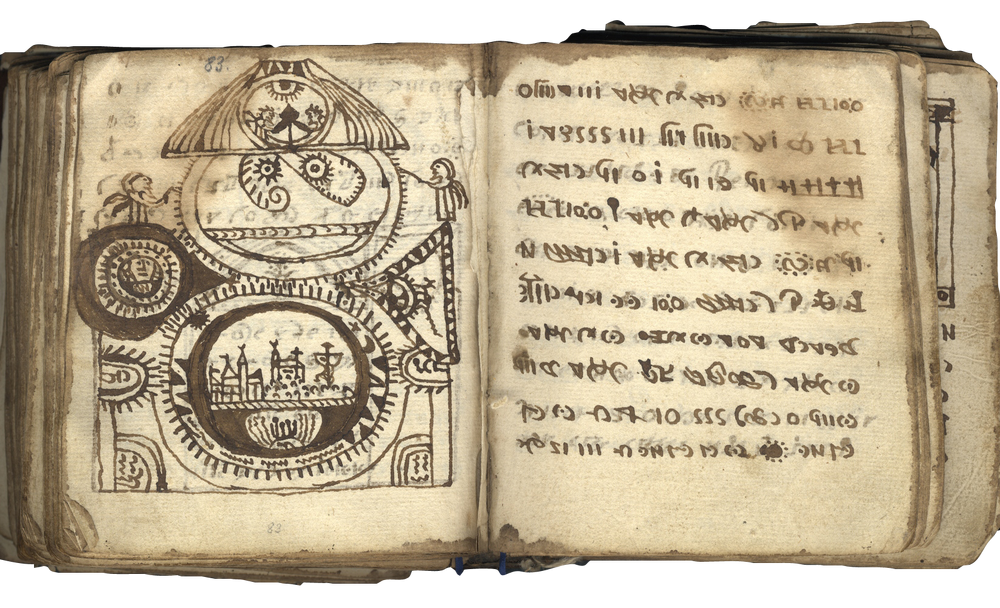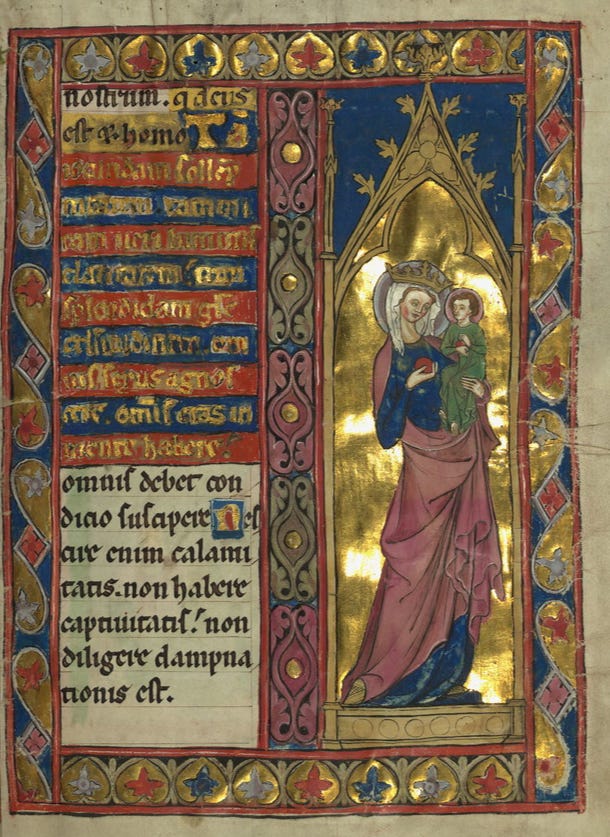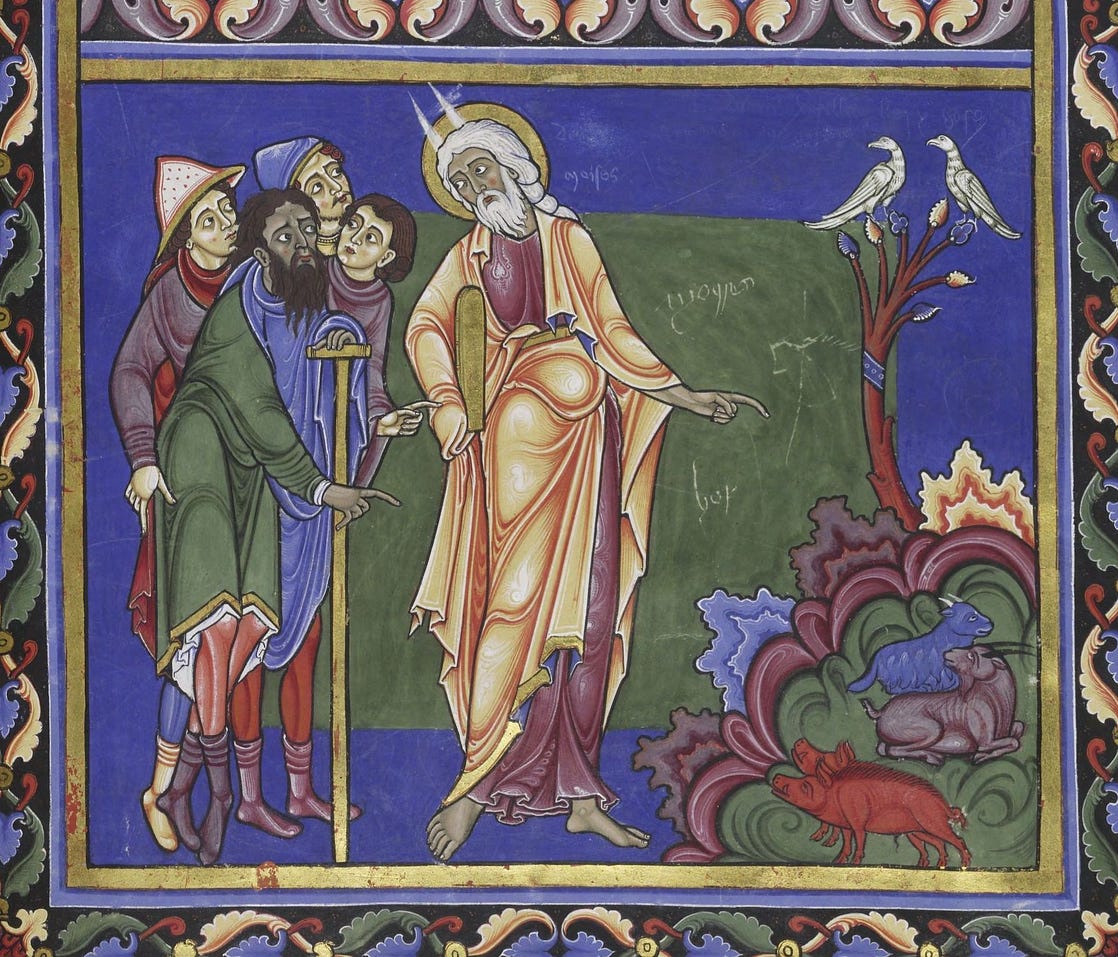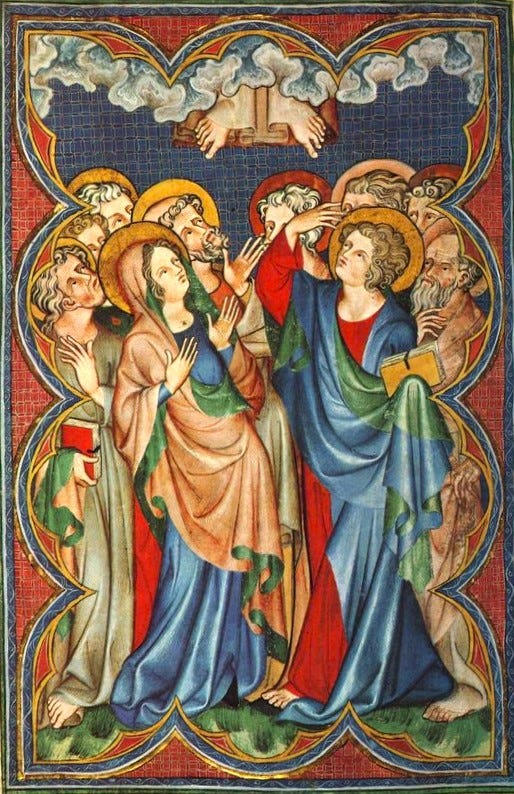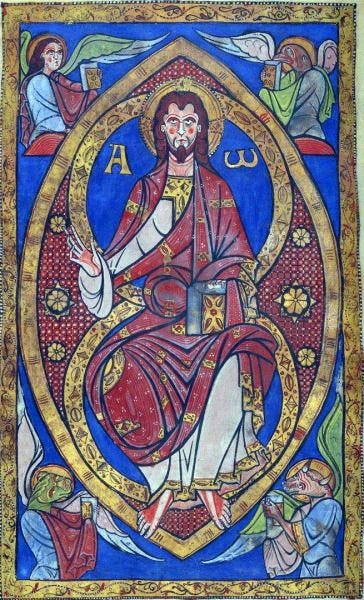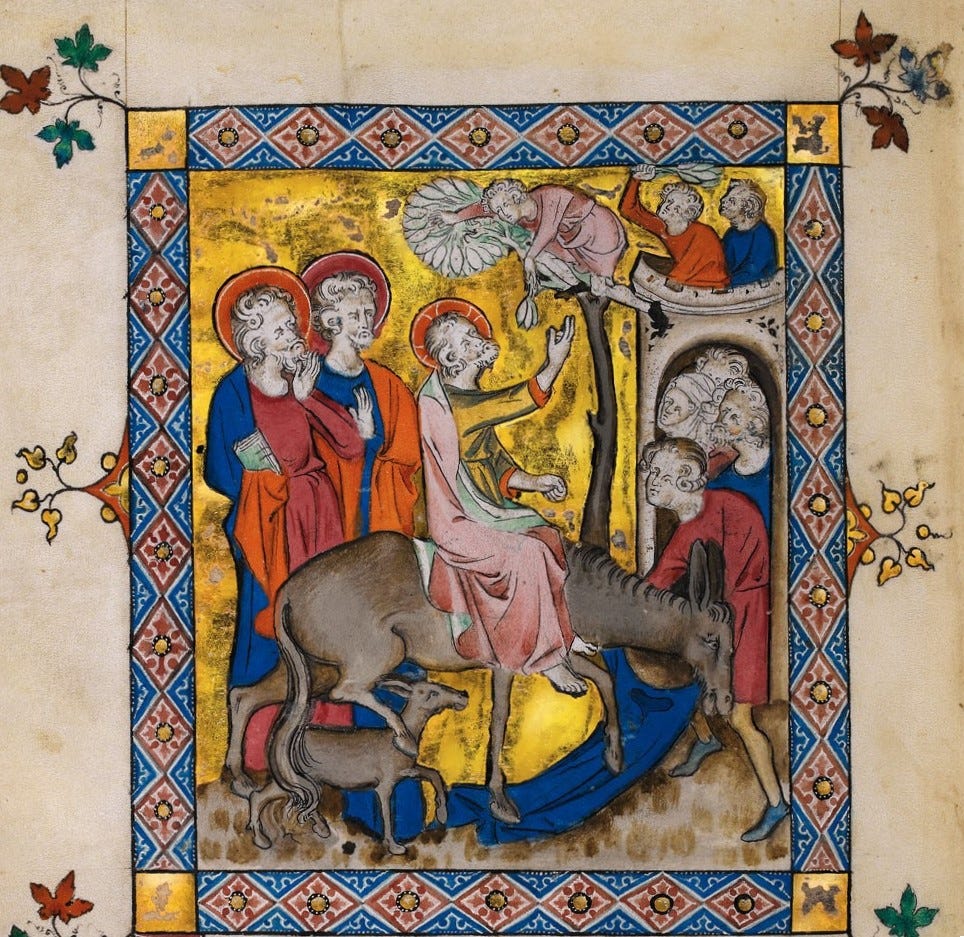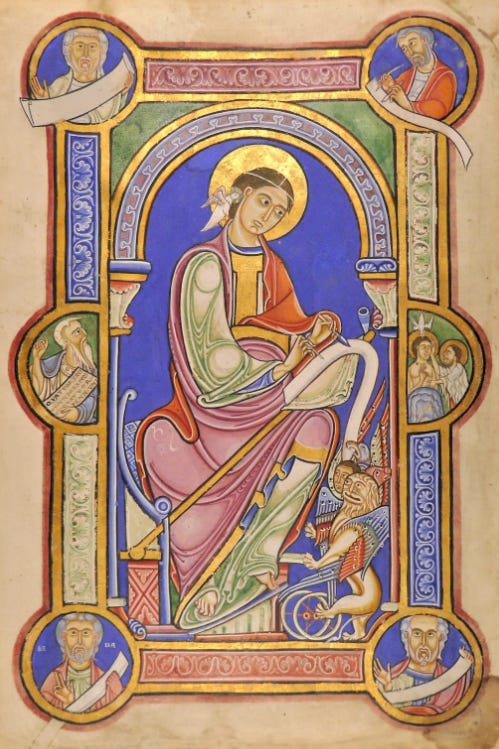Friday Goodie Bag for June 14: some unusual manuscripts and YET another quiz!
06-14-2024
Friday Goodie Bag for June 14: some unusual manuscripts and YET another quiz!Below the fold: A nice 14th century high res download, some more pics from Subiaco and a lucky moment at the Narni Duomo caught on video
Three unusual manuscriptsI’ve found a few interesting objects that don’t quite fit into the usual categories in medieval manuscript art. These oddities are worth googling more about. Voynich Manuscript The Voynich manuscript is perhaps the most famous unsolved manuscript, renowned especially for its undecipherable script. Discovered in 1912 by Wilfrid Voynich, a rare book dealer, this 240-page book is accompanied by vivid illustrations of plants, astronomical diagrams, and human figures. The manuscript’s origins are uncertain, but it is generally dated to the early 15th century, based on radiocarbon analysis of the vellum. What makes the Voynich manuscript particularly baffling is the sheer complexity of its text and illustrations. Many of the illustrations do not match any known plant species. The book also includes intricate, and sometimes surreal, images of nude women. Some have speculated that the illustrations suggest the manuscript might be an elaborate herbal, medical or scientific treatise, or even a magical or alchemical text. Despite numerous efforts by cryptographers, linguists, and computer scientists, including attempts to use artificial intelligence, the Voynich manuscript remains undeciphered. This enduring mystery continues to fascinate and challenge researchers, standing as one of the most intriguing puzzles in the history of written language. Utrecht Psalter  The charm, liveliness and timelessness of the figures...
The Utrecht Psalter is a richly illuminated manuscript that dates back to the Carolingian era, around 820-835 AD. It is considered one of the most significant medieval manuscripts due to its unique artistic style. The Psalter contains the text of all 150 Psalms in Latin, and a collection of canticles and hymns that were likely used in the monastic Divine Office. It has been housed at the library of the University of Utrecht since the early 18th century. What sets the Utrecht Psalter apart is its distinctive illustrative style, characterized by vivid, dynamic and highly spontaneous pen-and-ink drawings that illustrate the text of each psalm. Though very simple, these charming and detailed illustrations convey a sense of liveliness and emotion. The illustrations provide a visual commentary on the meaning and themes of each psalm. This integration of text and image in such an expressive manner was unprecedented at the time and had a profound impact on the development of Western manuscript illumination. Rohonc Codex The Rohonc Codex is one of the most enigmatic and mysterious manuscripts in the world, captivating scholars and cryptographers for decades. Discovered in Hungary in the early 19th century, it is a book of 448 pages filled with an unknown script and a series of illustrations depicting a wide variety of scenes, from Christian religious images to everyday life. The name "Rohonc" comes from the town of Rohonc (now known as Rechnitz) in western Hungary, where the manuscript was kept in the library of the Batthyány family before being donated to the Hungarian Academy of Sciences. What makes the Codex particularly intriguing is its undeciphered script and language. Despite numerous attempts, no one has been able to conclusively decode the text or identify the language in which it was written. The script appears to be unique, with more than 200 distinct symbols, and it does not correspond to any known writing system. The illustrations depict scenes that seem to blend elements of Christianity, paganism, and even possibly Hinduism, suggesting a syncretic cultural background. The varied and sometimes anachronistic nature of the scenes depicted has fuelled debates about the manuscript’s authenticity and provenance. A pair of independent researchers have recently claimed to have cracked the code, which they say is not a letter-substitution. The claim hasn’t been verified, but you can keep abreast of developments on the book’s Facebook page. Quiz time!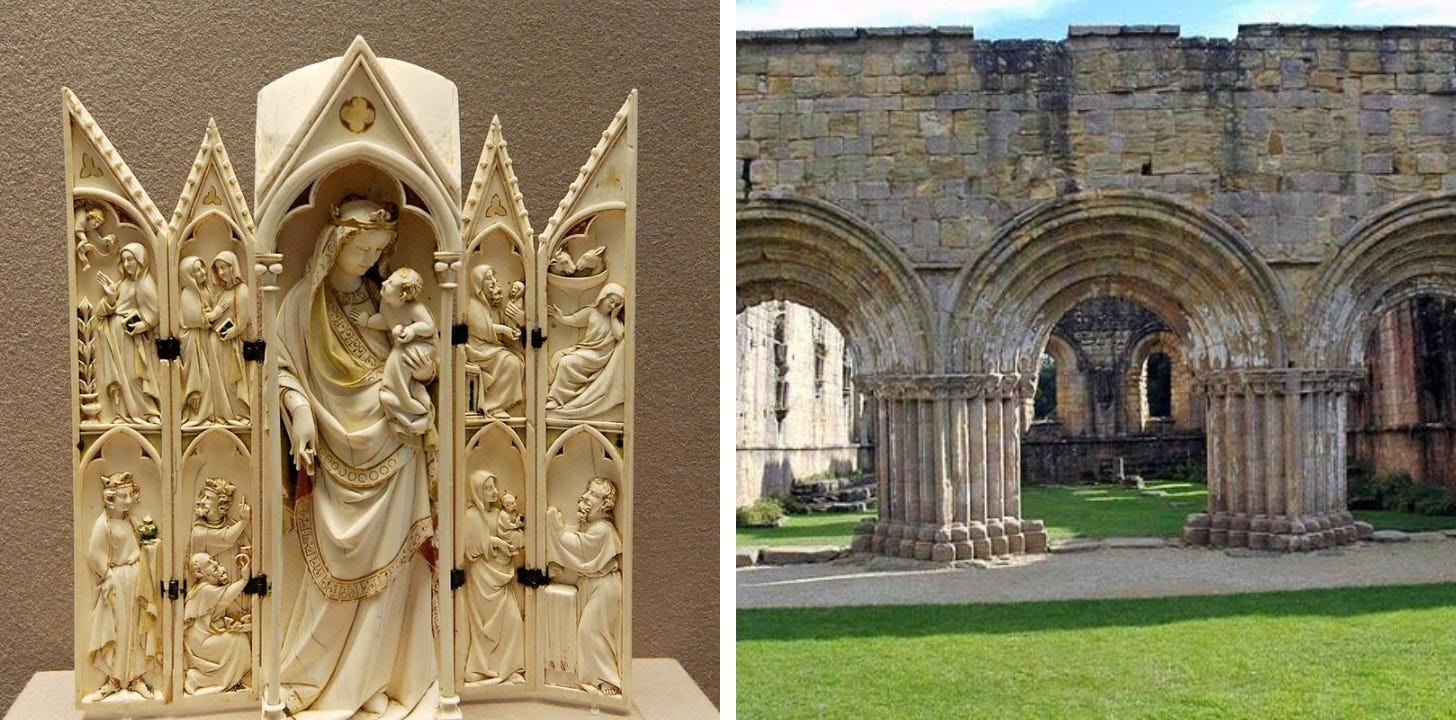 We've probably got a pretty good handle on the differences by now between Gothic and Romanesque in the 3D arts...
Today we’re going to play “Romanesque or Gothic?” for some manuscript images. (Cheating strongly encouraged. Google is our friend.)
Answers as always in next week’s Friday Goodie Bag post. I hope if you’ve enjoyed the free material you’ve found here, and that if you think you might enjoy more in-depth and uplifting stuff, including the podcasts that are coming, you’ll consider taking out a paid subscription. Four months ago, I scrinched up my courage, closed my eyes and held my breath, and took the risk of diving head first and full time into this project and just hoped it would work. And I’m kind of amazed by what a good gamble that was. There’s lots of plans afoot going forward, and the only way to do any of it is with your support: The Sacred Images Project is a reader-supported publication where we talk about Christian sacred art, the first 1200 years. It’s my full time job, but it’s still not bringing a full time income, so I can’t yet provide all the things I want to and am planning. You can subscribe for free to get one and a half posts a week. For $9/month you get a weekly paywalled in-depth article on this great sacred patrimony, plus extras like downloadable exclusive images, ebooks, mini-courses, photos, videos and podcasts (in the works). If you’d like to choose the amount you contribute, you can set up a monthly patronage at my studio blog, Hilary White; Sacred Art here: Below the fold today, we have a downloadable high resolution image from the Metropolitan Museum, a gorgeous gold-ground Trecento painting of the Crucifixion by Pietro Lorenzetti. Also an exclusive video; a clip I was lucky enough to catch one day when I popped into the Narni Duomo, our 11th century Romanesque cathedral, and just stumbled on a rehearsal by a professional polyphony choir. Gorgeous! And we’re going to take a brief very close up look at the impact of underpaintings in some very famous works, thanks to the digital images being made available by some of the big European museums. Subscribe to join us! Subscribe to The Sacred Images Project to unlock the rest.Become a paying subscriber of The Sacred Images Project to get access to this post and other subscriber-only content. A subscription gets you:
|

